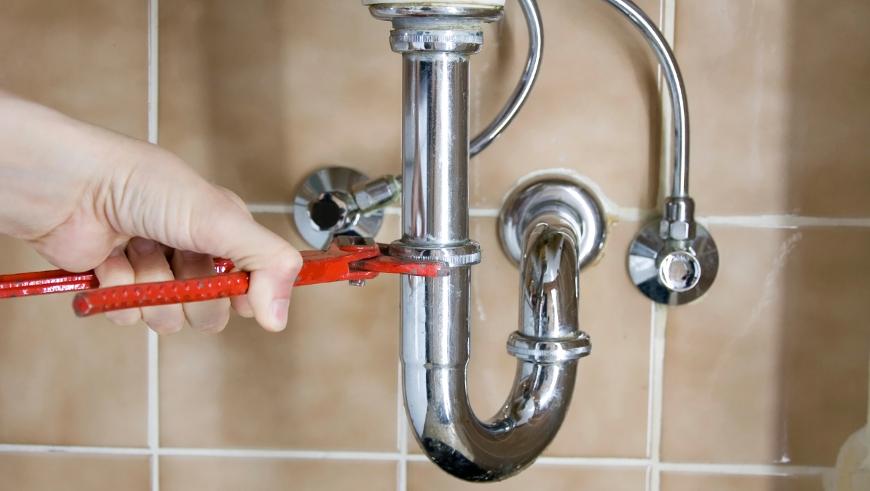Cost of Moving Drains For Extension
Last updated 2nd July, 2025
Need to know how much it'll cost to move a drain?
This guide covers everything you need to know if you think you'll need to move a drain when building an extension.
It includes estimated costs for the jobs involved, an overview of all the steps involved, details about relevant building regulations, FAQs, and much more!
Let's begin!

Table of Contents
How Much Does It Cost to Move a Drain?
The initial cost for moving a drain involves completing a drain survey - a basic scan is priced at approximately £250. The work itself may take a few days to be completed, although this can vary depending on the size of the job.
How much work is required to move the drains may also affect the cost and materials needed.
The length of pipework is central to the material cost, which can be as little as £5 per metre, whereas a higher-quality product or a specific type of piping can potentially be closer to £30 per meter. However, in most cases expect the price to be closer to the lower end of the scale.
On average, the overall cost will amount to around £1,000 although this may vary depending on the complexity of the work. Labour costs are around £250 per day, with most jobs taking between 1-3 days, again depending on what's required and to have a new sewer line officially signed off will cost £125.
As an example, below are some estimated drain removal costs required for an extension.
| Job Description | Avg. Cost | Duration |
|---|---|---|
| Basic CCTV scan of your drains | £250 | 1-3 Hours |
| New sewer line signed off by a building inspector | £125 | 1-2 Hours |
| Move small drain for a kitchen extension | £1000 | 1-3 Days |
Drain Relocation Cost Breakdown Calculator
Individual costs of a small drain removal for an extension: £1000
Materials
£250
Tradesmen
£750
Waste Removal
£0
How Much to Remove Drains?
When adding an extension altering the drainage is often inevitable and the proper planning and execution of drainage modifications is vitally important.
Obviously, if your planned extension will be on top of a manhole cover, then you will have to make arrangements so that the drains can still be easily accessed even after the extension is complete, this will normally entail moving the drain or at least creating a new access which is acceptable to the local water authority.
What Are the First Steps?
Making a plan of how you intend to change the drainage system can help to avoid some of the many pitfalls with underground drainage. Creating a plan of the underground drains can be done in one of three ways.
First, check with the council to see if they have any plans of the house to use as a reference as this will be cheaper than getting a surveyor to do a plan of the drains beneath your home from scratch. You need to be careful when using old plans as things could have been changed with the drainage since those plans were created due to other building alterations.
Do I Need a Surveyor?
Hiring a surveyor will be costly but should give you correct and current information on your drainage system. The cheaper but more time-consuming option is to start lifting manhole covers and try to work out the layout of the drainage system and draw a plan yourself. Unless you are pretty confident and have some skills in this area, you would be best to use one of the other options.
What Types of Drainage Are There?
Making changes to underground drainage is not an easy task. There are two types of underground drainage, surface water drainage and foul water drainage.
- Surface water drainage - Includes gutters, pipes and drains that carry rainwater into the nearest canal or river
- Foul water drainage - Takes water from your sink, washing machine, bath, shower, and toilet to the nearest sewer
These two systems are always kept completely separate, although it can be acceptable to let surface water run into a foul water drainage system, but never the other way round!
There is, however, a third drainage system available, albeit still quite rare in the UK:
- Greywater drainage - This modern system keeps water from your bath, sink and appliances, ensuring it is separate from toilet waste. It is then filtered into a storage tank to be re-used where clean water isn't strictly required (such as watering the garden or flushing a toilet).
Benefits of a greywater drainage system include:
- Reduces water consumption - Allows used water be re-used elsewhere
- Lowers water bills - Reusing water can significantly reduce water bills
- Environmentally friendly - Conserves water, reduces waste, and lessens the strain on sewage
- Flood prevention - Less waste helps to reduce the risk of flooding
Do I Need Building Regulations?
If you have to move a drain then it needs to be planned out thoroughly and whether or not you need permission depends on the individual project, but you should seek professional advice in every case as mistakes with permissions can be very costly to put right.
You need to refer to Part H of schedule 1 of the Building Regulations if you plan on doing the works yourself but it is likely that a building inspector will need to visit and carry out an inspection to ensure that everything meets the current regulations.
Anything Else I Need To Consider?
Modifying gutters and drainpipes are pretty simple, just try to find the same make of drainage system to the one currently being used so it is easier to link the new pieces to the existing pieces, plus it will also look better than using a completely different type of drainage system.
However, modifying underground drains is much more difficult and expensive. Though it may seem like a complicated job, do not ignore obvious rules, make sure that all drains run downhill at a slight angle which is continuous to avoid overflowing drains and nasty smells or blockages.
The other main rule with drains that is sometimes overlooked, is that it is essential that all drainage systems can be unblocked by locating inspection chambers at junctions and bends in the drainage system. These inspection channels also allow air into the system which is needed to replace the water as it drains.
If you need new major junctions and inspection chambers, then it is essential that you get expert assistance.






